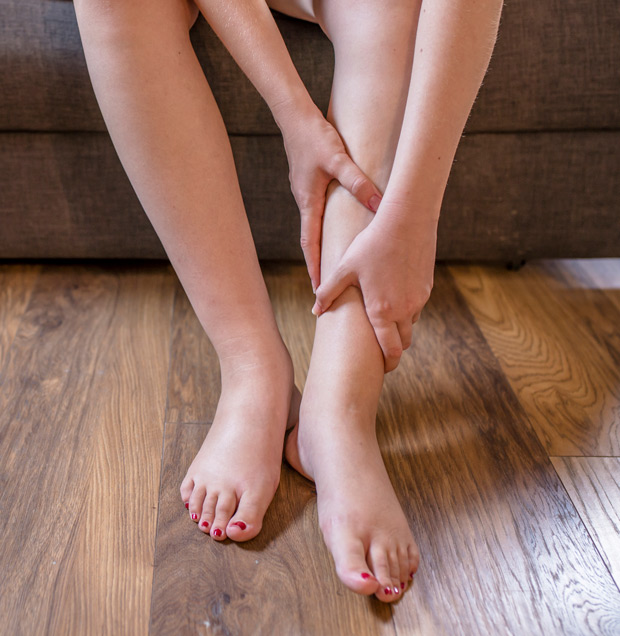
Peripheral
Peripheral artery disease and peripheral vascular disease are among the most commonly spoken phrases in relation to heart disease. The terms refer to disorders and diseases of blood vessels around the heart, such as a buildup of plaque in the arteries that can lead to improper blood flow to and from the heart. There are many different signs of PAD or PVD, but only a cardiologist can determine if the signs you are experiencing are related to these heart diseases.
Learn more about specific heart conditions and treatments below.
Peripheral Vascular Disease (PVD)
Peripheral vascular disease (PVD) refers to diseases and disorders of the blood vessels outside of the heart, such as those of the brain, gut, kidneys, or limbs. PVD is typically caused by blockage or damage to blood vessels such as veins and arteries.
Think of your body’s circulation like the plumbing in your house: pipes bring water in and take water away. When your heart pumps, blood moves through pipes called arteries to supply all of your organs and limbs. From there, blood returns to the heart in pipes called veins and lymphatic vessels. Each of these vessels can develop its own set of problems.
Over time, arteries can build up with cholesterol plaques and narrow. This can happen to arteries anywhere in the body, for example:
- In the neck arteries that supply the brain, which can lead to a mini stroke or a stroke.
- In the arteries to the arms, which may lead to fatigue or tiredness in one arm more than the other or result in a difference in blood pressure between the arms.
- In the heart’s arteries, which may lead to shortness of breath and pressure in your chest, arms, neck, back, or stomach. (In women, the symptoms may be less specific, like fatigue or nausea.)
- In the arteries to your kidneys, which may cause your blood pressure to be poorly controlled (sometimes suddenly) or may lead to deteriorating kidney function.
- In the aorta, which is the main artery which supplies all organs and limbs; this may contribute to weakening of the wall and formation of an aneurysm, the danger of which is a rupture.
- In the arteries to your legs, which may cause you to start walking slowly and have difficulty keeping up from fatigue, weakness, or discomfort/cramping.
Your veins move blood back to the heart. While veins don’t develop cholesterol build-up, they do develop a very common disease in the legs. To facilitate the movement of blood from the legs to your heart, your veins have valves that allow the blood to flow up to the heart. In some people, these valves may stop working, resulting in blood flowing backward, which is called venous insufficiency.
Symptoms of this disease may include:
- Fatigue or heaviness in the legs, especially at the end of day
- Swelling of ankles
- Cramps at night time
- Itching of skin
- Restless legs
- Pigmentation of skin below the knee
- Formation of visible veins on the legs and sores above the ankle that don’t heal quickly
If you’ve been diagnosed with peripheral arterial disease, there are several key questions that you should ask your cardiologist during your next visit. These questions will ensure that you and your doctor have discussed your major risk factors so that you can become or stay as healthy as possible.
- Am I at risk of developing PAD?
- How can I reduce my risk for PAD?
- Should I see a podiatrist?
- What are my risk factors for PAD?
- Can any natural or prescription medicines help reduce my risks?
- How do I care for my feet and legs?
- What lifestyle changes do I need to focus on?
- Can I exercise if I have PAD?
- What other diseases and conditions are associated with circulation that I may be at risk for, and how do I know if I have them?
- When should I seek emergency care for PAD?
- How can I be tested for PAD?
- How can PAD be treated if I am diagnosed with it?
- What is my prognosis?
- What options are available to help me stop smoking?
- Can you help me come up with a plan to lose weight?
Peripheral Neuropathy
Peripheral neuropathy is a problem that affects the peripheral nerves. These are the nerves that control your sense of touch, how you feel pain and temperature, and your muscle strength. Most of the time the problem starts in the fingers and toes. As it gets worse, it moves into the limbs, causing pain and loss of feeling in the feet, legs, and hands.
When you have peripheral neuropathy, you may have less feeling in your fingers and toes. You also may have trouble with your balance, and it may be hard to do things that require coordination, such as walking or fastening buttons.
Doctors don’t always know what causes peripheral neuropathy. It is often caused by other health problems. It can also run in families.
The most common cause is diabetes. Having your blood sugar too high for too long a time can damage the nerves.
Other problems can also cause peripheral neuropathy, such as:
- Kidney problems. These can lead to toxic substances in the blood that damage nerves.
- Vitamin deficiencies and alcoholism. Not getting enough nutrients, such as vitamin B-12, can damage nerves. Overuse of alcohol and not eating a healthy diet can lead to these vitamin deficiencies.
- Infectious or inflammatory diseases, such as HIV or Guillain-Barré syndrome. These diseases can damage the central and peripheral nerves.
- Exposure to toxic substances, such as arsenic, or by certain medicines such as those used for chemotherapy.
Symptoms can occur slowly over time. The most common ones are:
- Numbness, tightness, and tingling, especially in the legs, hands, and feet.
- Loss of feeling.
- Burning, shooting, or stabbing pain in the legs, hands, and feet. Often the pain is worse at night.
- Weakness and loss of balance.
It can be hard to diagnose peripheral neuropathy because symptoms can vary. People who have diabetes need to get a complete foot exam every year. During the foot exam, the doctor will check for signs of this peripheral neuropathy.
Your doctor will start by asking questions about:
- Your symptoms.
- Your medical history, including use of alcohol, risk of HIV infection, or exposure to toxic substances.
- Your family’s medical history, including nerve disease.
Your doctor may also test your muscle strength and ability to feel touch, temperature, and pain. These tests include electromyography and nerve conduction tests. You may also have blood tests to find out if you have diabetes, vitamin deficiencies, thyroid disease, or kidney problems that might cause neuropathy.
The focus of treatment for peripheral neuropathy is to relieve symptoms by treating the health problem that’s causing it. For example, vitamin deficiency caused by overuse of alcohol can be treated by eating a healthy diet, taking vitamin supplements, and stopping alcohol use.
If you have diabetes, controlling your blood sugar can slow neuropathy and may improve it. You may have physical therapy to increase muscle strength and help build muscle control. Over-the-counter medicine can relieve mild nerve pain. Your doctor may also prescribe medicine to help with severe pain, numbness, tingling, and weakness.
Adopting healthy habits can reduce the effects of peripheral neuropathy. Be sure to eat a balanced diet, get regular exercise, avoid alcohol, and quit smoking.
It’s also a good idea to take care to avoid injury. When your feet or legs feel numb, it’s easier to lose your balance and fall.
At home:
- Remove throw rugs and clutter.
- Install sturdy handrails on stairways.
- Put grab bars near your shower, bathtub, and toilet.
To protect your hands:
- Use pot holders and avoid hot water when you are cooking.
- Always check your bath or shower using a part of your body that can feel temperature normally, such as your elbow.
Check your feet every day (or have someone else check for you):
- Look at all areas of your feet, including your toes.
- Use a handheld mirror or a magnifying mirror attached to the bathroom wall near the baseboard to inspect your feet.



